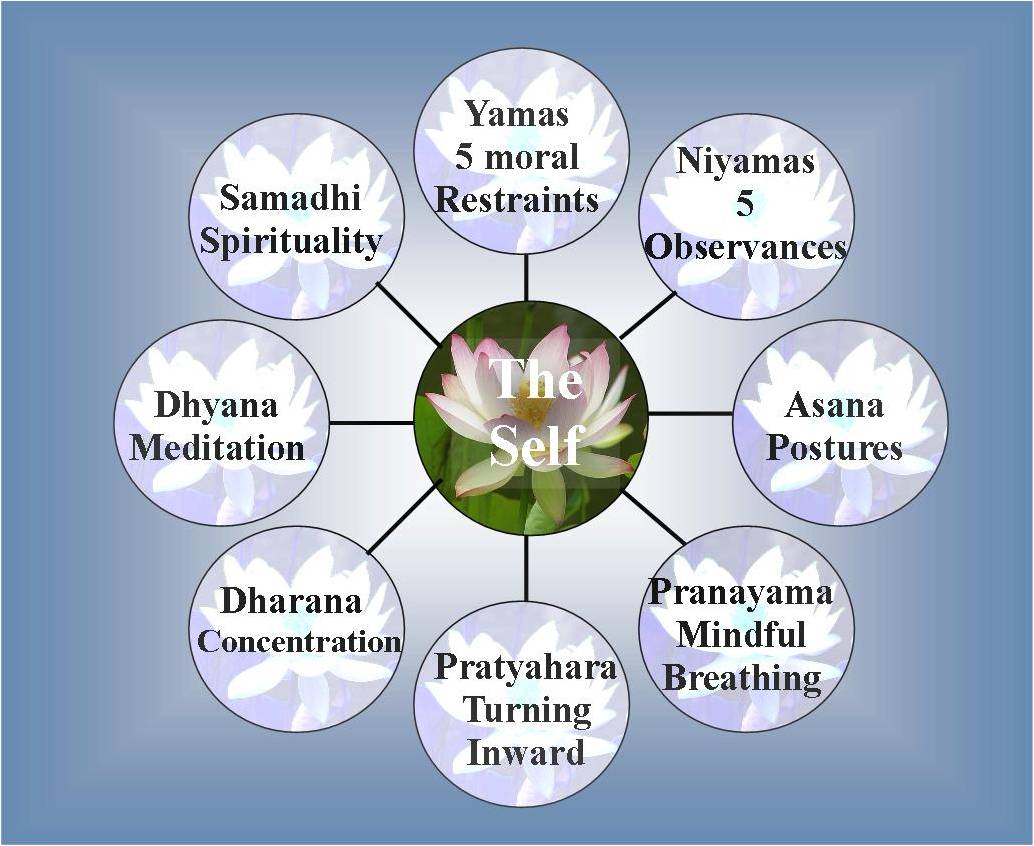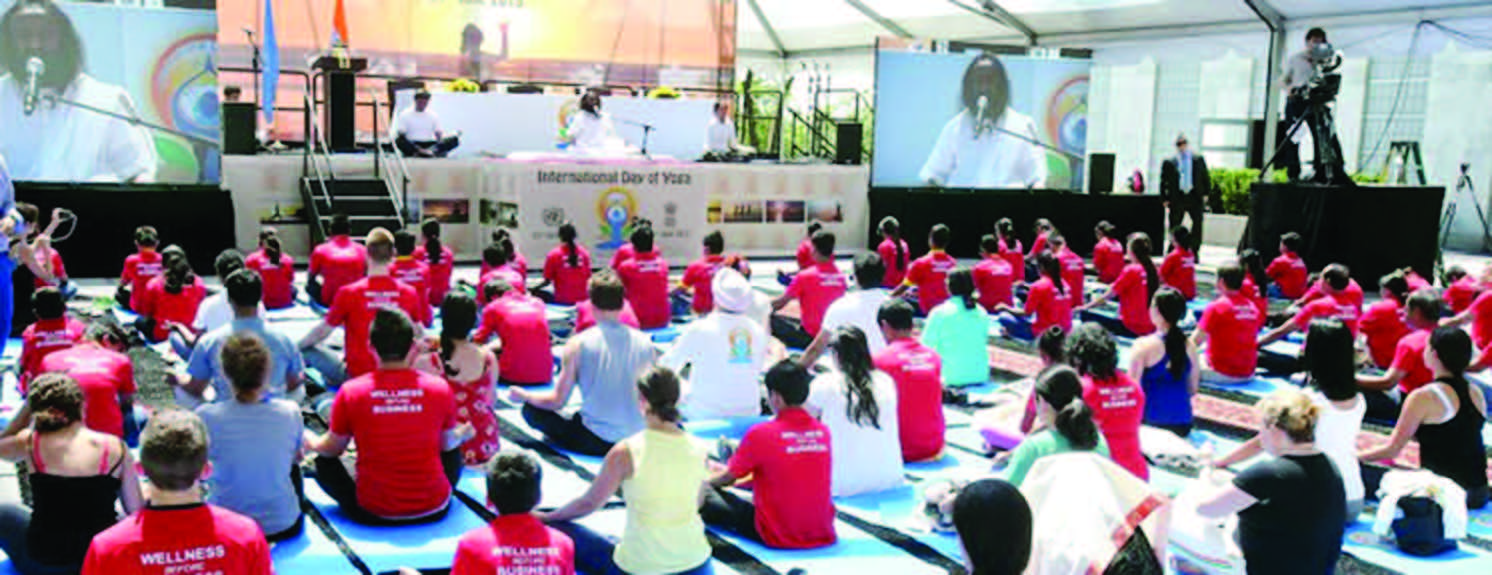
REACHING BEYOND THE EGO-PERSONALITY
The desire to transcend the human condition, to go beyond our ordinary consciousness and personality, is a deeply rooted impulse that is as old as self-aware humanity. We can see it at work in the magically charged cave paintings of Southern Europe and, earlier still, in the Stone Age burials of the Middle East. In both cases, the desire to connect with a larger reality is expressed. We also encounter that desire in the animistic beliefs and rites of archaic Shamanism, and we see its flowering in the religious traditions of the neolithic age—in the Indus-Sarasvati civilization, and in Sumer. Egypt, and China.
But nowhere on Earth has the impulse toward transcendence found more consistent and creative expression than on the Indian peninsula, the civilization of India has spawned an almost overwhelming variety of spiritual beliefs, practices, and approaches. These are all targeted at a dimension of reality that far eclipses our individual human lives and the orderly cosmos of our human perception and imagination. That dimension has variously been called God, the Supreme Being, the Absolute, the (transcendental) Self, the Spirit, the Unconditional, and the Eternal.
Diverse thinkers, mystics, and sages—not only of India but from around the world—have given us a plethora of images or explanations of the ultimate Reality and its relation to the manifest universe. All, however, are in agreement that God, or the Self, transcends both language and the mind. With few exceptions, they are also unanimous in making three related claims, namely that the Ultimate:
1. is single– that is, an undivided Whole complete in itself, outside which nothing else exists;
2. is of a higher degree of reality than the world of multiplicity reflected to us through our senses; and
3. is our highest good (nihshreyasa; Latin: summum bonum), that is, the most desirable of all possible values.
Additionally, many mystics claim that the ultimate Reality is utterly blissful. This bliss is not merely the absence of pain or discomfort, nor is it a brain-dependent state. It is beyond pain and pleasure, which are states of the nervous system. This goes hand in hand with the insistence of mystics that their realization of the transcendental Identity is not an experience, as ordinarily understood. Such adepts simply are that Reality. Therefore, in connection with this highest accomplishment on the spiritual path I prefer to speak of God- or Self-realization as opposed to mystical experience. Other terms used are “enlightenment” and “liberation”.
India’s spirituality, which goes by the name of Yoga, is undoubtedly the most versatile in the world. In fact, it is hard to think of any metaphysical problem or solution that has not already been thought of by the sages and pundits of ancient or medieval India. The “sacred technicians” of India have experienced and analyzed the entire spectrum of psychospiritual possibilities—from paranormal states to the unitive consciousness of temporary God-realization to permanent enlightenment (known as sahaja-samadhi, or “spontaneous ecstasy”).
The methods and lifestyles developed by the Indian philosophical and spiritual geniuses over a period of at least five millennia all have one and the same purpose: to help us break through the habit patterns of our ordinary consciousness and to realize our identity (or at least union) with the perennial Reality. India’s great traditions of psychospiritual growth understand themselves as paths of liberation. Their goal is to liberate us from our conventional conditioning and hence also free us from suffering, because suffering is a product of our unconscious conditioning. In other words, they are avenues to God-realization, or Self-realization, which is an utterly blissful condition.
God, in this sense, is not the Creator God of deistic religions like Judaism, Islam, and Christianity, Rather, God is the transcendental totality of existence, which in the nondualist schools of Hinduism is referred to as brahman, or “Absolute”. That Absolute is regarded as the essential nature, the transcendental Self, underlying the human personality. Hence, when the unconscious conditioning by which we experience ourselves as independent, isolated egos is removed, we realize that at the core of our being we are all that same One. And this singular Reality is considered the ultimate destination of human evolution. As the modern yogin-philosopher Sri Aurobindo put it:
We speak of the evolution of Life in Matter, the evolution of Mind in Matter; but evolution is a word which merely states the phenomenon without explaining it. For them seems to be no reason why Life should evolve out of material elements or Mind out of living form, unless we accept the Vedantic solution that Life is already involved in Matter and Mind in Life because in essence Matter is a form of veiled Life, Life a form of veiled Consciousness. And then there seems to be little objection to a farther step in the series and the admission that mental consciousness may itself be only a form and a veil of higher states which are beyond Mind. In that case, the unconquerable impulse of man towards God, Light, Bliss, Freedom, Immortality presents itself-in its right place in the chain as simply the imperative impulse by which Nature is seeking to evolve beyond Mind, and appears to be as natural, true and just as the impulse towards Life which she has planted in certain forms of Matter or the impulse towards Mind which she has planted in certain forms of Life…Man himself may well be a thinking and living laboratory in whom and with whose conscious co-operation she wills to work out the superman, the God.
Or shall we not say, rather, to manifest God?
The idea that the impulse toward transcendence is a primary and omnipresent, if mostly hidden, force in our lives has been vocalized by a number of eminent transpersonal Psychologists, notably Ken Wilber. He speaks of this force as the “Atman project”.
Development is evolution; evolution is transcendence…and transcendence has as its final goal Atman, or ultimate Unity Consciousness in only God. All drives are a subset of that Drive, all wants a subset of that Want, all pushes a subset of that Pull – and that whole movement is what we call the Atman project: the drive of God towards God. Buddha towards Buddha, Brahman towards Brahman, but carried out initially through the intermediary of the human psyche, with results that range from ecstatic to catastrophic.
The impulse toward transcendence is thus intrinsic to human life. It manifests itself not only in humanity’s religio-spiritual search but also in the aspirations of science, technology, philosophy, theology, and art. This may not always be obvious, especially in those areas that, like contemporary science, are anxious to deny any associations with metaphysical thought, and instead pay homage to the twin idols of skepticism and objectivity. Nevertheless, as perceptive critics of the scientific enterprise have pointed out, in its passionate quest for knowledge and meaning, science is merely usurping the supreme place that was once accorded to religion and theology.
Today, the metaphysical roots of science are rendered visible especially by quantum physics, which undermines the materialistic ideology that has been the creed of many, if not most. Scientists for the past two hundred years. In fact, avantgarde physicists like David Bohm and Fred Alan Wolf have formulated broad quantum-physical interpretations of reality that converge in many respects with traditional Eastern ideas about the structure of the world: The universe is a single and ultimately unimaginable- sea of energy (“quantum foam”) in which differentiated forms – things – appear and disappear, possibly for all eternity. Gary Zukav writes:
Quantum mechanics, for example, shows us that we are not as separate from the rest of the world as we once thought. Particle physics shows us that the “rest of the world” does not sit idly “out there”. It is a sparkling realm of Continual creation, transformation, and annihilation. The ideas of the new physics, when wholly grasped, can produce extraordinary experiences. The study of relativity theory, for example, can produce the remarkable experience that space and time are only mental constructions!
It is clear from the work of such creative scientists as those mentioned above that science, like every other human endeavor, harbors within itself the impulse toward transcendence. Rightly, John Lilly called science a “simulation of God”. What Lilly meant by this phrase is this: We humans try to describe and understand ourselves and the world that apparently surrounds us. In doing so, we create models of reality and programs by which we can maneuver in our conceptualized, simulated worlds. All the while, however, we are pushed – or pulled – to reach beyond our models and programming, beyond our mind.
If we look upon science and technology as forms of the same impulse toward transcendence that has motivated India’s sages to explore the inner universe of consciousness, we can see many things in a radically new perspective. We need not necessarily regard science and technology as perversions of the spiritual impulse, but rather as unconscious expressions of it. No moral judgment is implied here, and we can simply set about introducing a more comprehensive and self-critical awareness into the scientific and technological enterprise. In this way, we can hope to transform what has become a runaway obsession of the left brain into an authentic and legitimate pursuit in service of the whole human being and the whole of humankind.
In Rabindranath Tagore’s delightful work Gitanjali, there is a line that sums up our modern attitude, which is one of dilemma: “Freedom is all I want, but to hope for it I feel ashamed”. We feel ashamed and awkward because we feel that the pursuit of spiritual freedom, or ecstasy, belongs to a bygone age, a lost worldview. But this is only a half-truth. While certain conceptions and approaches to spiritual freedom are clearly antiquated, freedom itself and its pursuit is as important and relevant today as it has ever been. The desire to be free is a timeless urge and concern. We want freedom, or abiding happiness, but we seldom acknowledge this deep-seated wish. It remains on the level of an unconscious program, secretly motivating us in all our undertakings—from scientific and technological ingenuity to artistic creativity, to religious fervor, to sports, to sexuality, to socializing., and, alas, also to drug and alcohol addiction. We seek to be fulfilled, made whole or happy by all these pursuits. Of course, we find that whatever happiness or freedom we gain is frustratingly ephemeral, and we take this as an incentive to continue our ritual quest for self-fulfillment by seeking further stimulation.
Today, however, we can take encouragement from the new vision embodied in quantum physics and transpersonal psychology, and boldly raise this urge to the level of a conscious need. In that event, the unrivaled wisdom of the liberation teachings of India and the Far East will assume a new significance for us, and the present-day encounter between East and West can fulfill itself.
(Excerpted from Yoga Tradition by George Feuerstein, Ph.D.)





Be the first to comment